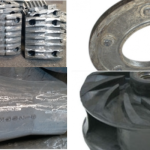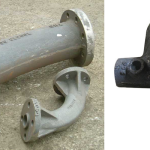How Are Ductile Iron and Gray Iron Castings Different?
The grey iron and ductile iron are distinguished by many factors. These also include the structure of the carbon present in them. They make and build their suitability for different kinds of projects. As a leading grey iron casting manufacturer in West Bengal, here we are going to highlight some of the key differences between ductile iron and grey iron castings and how these differences make them suitable for completely different kinds of purposes.
Five differences between ductile iron and grey iron castings
So, let’s dive into the key differences between ductile iron and grey iron castings.
Ductility
The first feature in our list is ductility. It is determined by the tendency to elongate under tension. Magnesium is usually added in the ductile iron. Hence, the graphite in the ductile iron has a nodular/spherical shape capable of conferring higher strength and ductility as opposed to the flake shaped gray iron.
Tensile and yield strength
There are many differences between grey and ductile iron in terms of their tensile strengths. While ductile iron has a minimum tensile strength of 60,000 psi and a minimum yield strength of 40,000 psi, grey iron does not have measurable yield strength; the range of tensile strength is 20,000 psi-60,000 psi.
Impact
Impact strength, aka the metal’s toughness, is yet another factor where these two types of castings diverge. It is a measure of the metal’s ability to resist fracturing. It can empower the metal to absorb an impact. Ductile iron tends to have a greater resistance to impacts. Hence, while ductile iron can be used and employed for critical applications involving impact, gray iron has a fundamental limit that prohibits it from being used for heavy impact purposes.
Thermal conductivity
Ductile iron tends to have a much lower thermal conductivity than grey iron. The graphite phase in grey irons infuses it with a very high thermal conductivity as heat transfer occurs through the graphite flakes. On the other hand, the isolated spheres of graphite in ductile iron lower its thermal conductivity considerably. And, in fact, it is not much more conductive than steel.
Vibration damping
Materials tend to absorb vibrational energy through internal friction. Gray iron can dampen the vibrations more effectively than ductile iron, because it tends to exhibit non-elastic tendencies with the application of minor stresses. A higher damping capacity means more fatigue resistance for the metals. This is why gray iron is most effective to reduce vibrations and noises that could be emitted by different components of the machineries.
Hence, these differences between the two kinds of castings underpin the diversity of their applications. If you are looking for any of these castings, reach out to Huston (India) Pvt. Ltd. today!




